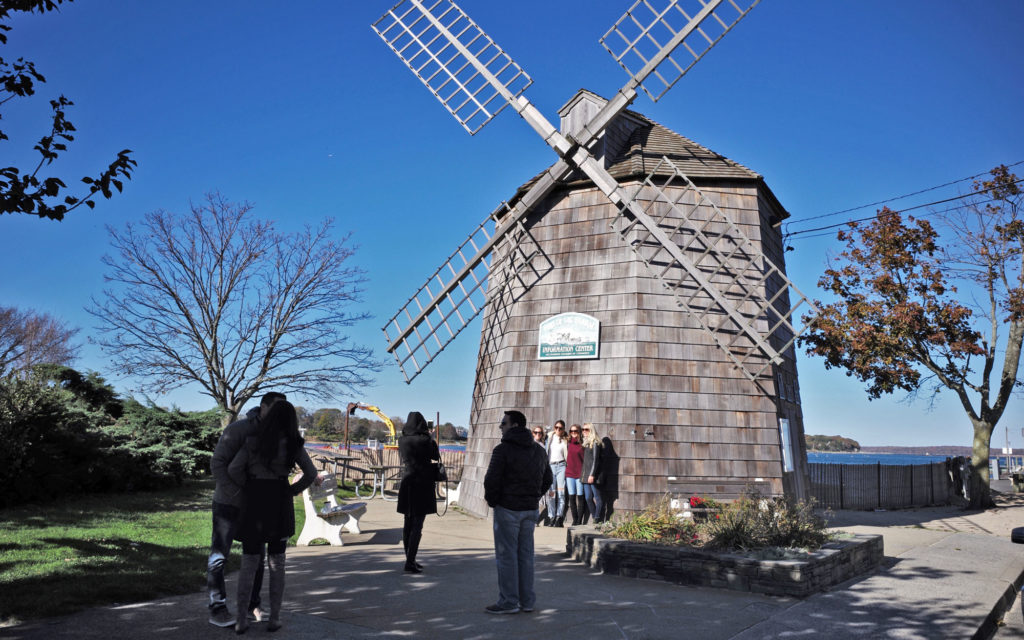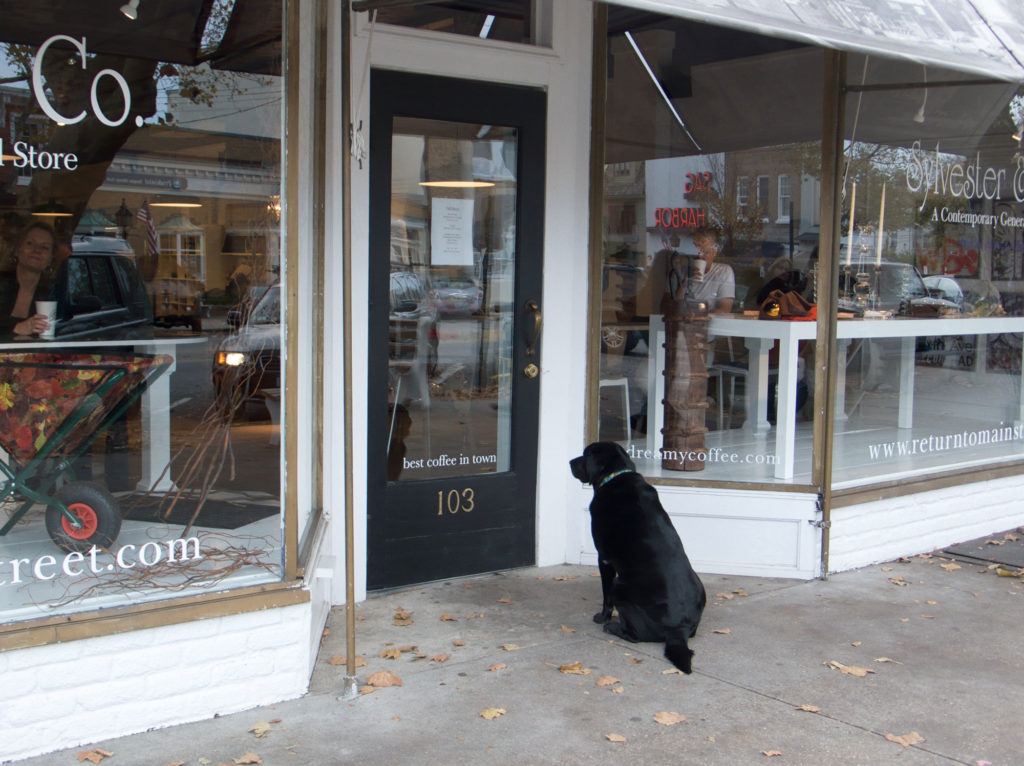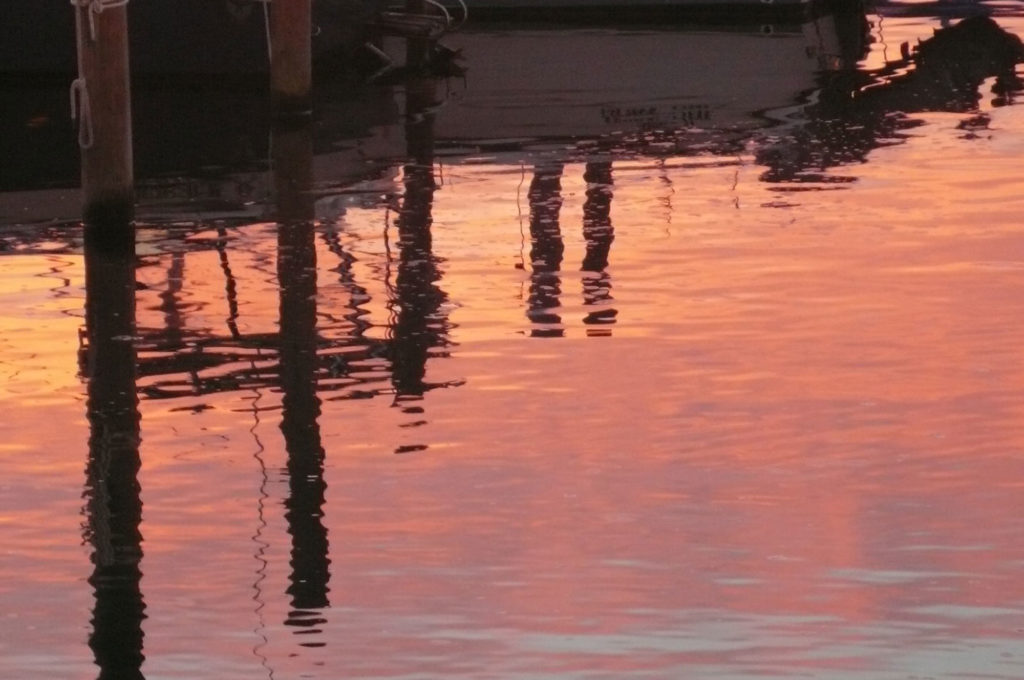
Sag Harbor is considered by many to be the “Un-Hamptons” village on the South Fork of Long Island.
It lacks the McMansions of East Hampton, Bridgehampton, and Southampton. Instead, it has old whaling captain’s homes with widow walks and old wooden churches with both Egyptian and Greek revival style features.
Instead of Madison Avenue retail outposts, Sag Harbor still has kooky hippy-style antique shops, bookstores and galleries like:

Sag Harbor actually has an old fashioned Five & Dime store, Sag Harbor Variety, where you can still buy patterns, fabric, zippers, Christmas ornaments and penny candy! And it has one of those old coin operated mechanical horses outside for children of all ages to enjoy.
In the summer, they close the street in front of the American Legion Hall for free Community Brass Band Concerts every Tuesday evening in July and August! Bring a folding chair and (ladies) wear a wide-brimmed red hat.
A Remarkable Place

The NY Times said about Sag Harbor: “To live in a place in the 21st century where a children’s librarian is a rock star in a community where rock stars actually live is truly remarkable.”
Sag Harbor has puppet shows for children all year long, and an intimate theater, Bay Street, that offers Broadway quality plays, comedy, films and music.
Many of the local actors, playwrights, and musicians can be seen there on a regular basis (think Alan Alda, Jimmy Buffet, Tony Roberts, Christine Ebersole, Billy Joel, and a local fave – Nancy Atlas – who rocks it up all winter).
A Harbor for Literature

Sag Harbor has a long history as home to some of America’s greatest writers:
- The Sag Harbor Express says: “Sag Harbor has welcomed writers, and artists too, since at least 1807. On Feb. 9th that year the Literary Society of Sag Harbor was organized to “consist of Disputation, composition, Declamation, and examination upon Geography, Astronomy and such other exercises as a majority shall appoint …” The duties of the Treasurer of the society included furnishing “stationary, fuel, candles, &c” and were also to be a “Critic” whose duty was “to criticize upon all compositions and declamations.” (Ah, a rare opportunity to put down other writers.) A system of fines was established for “gambling or intoxication outside of meetings, and no meeting should ever be held in a tavern” (an unexpected rule since writers forever have had high regard for drinking and taverns).
- Melville wrote about it in Moby Dick: “Arrived at last in old Sag Harbor; and seeing what the sailors did there; and then going on to Nantucket and seeing how they spent their wages in that place also, poor Queequeg gave it up for lost. Thought he, it’s a wicked world in all meridians; I’ll die a pagan.”
- John Steinbeck set out from Sag Harbor with his dog Charley.
- James Fennimore Cooper, Joseph Heller, E.L. Doctorow, Peter Mathiessen, Kurt Vonnegut & George Plimpton all lived and wrote in Sag Harbor.
- Spalding Gray moved to Sag Harbor from New York City and wrote: ”My evening walks with my son are such a joy because this is an idyllic place, a storybook fishing village with sea gulls and peaked roofs and houses that are close together. I keep waiting for the movie to begin.”
- NY Times – For the Creative, Havens in Sag Harbor
New York’s first Port of Entry and Whaling Center

And speaking of history … Sag Harbor was settled sometime between 1707 and 1730 (the first time it is mentioned by name in print.) It was named after a tuber raised by the Metoac Algonquins.
With its deep-water harbor, Sag Harbor quickly became a major international port and whaling center. It was the first Port of Entry to New York, with “more tons of square-rigged vessels engaged in commerce” than NY Harbor. It even boasted the first Customs House on Long Island, before New York City.
Being a major whaling port brought with it a colorful reputation — as described by Herman Melville. Sag Harbor was not a puritanical town! It was peopled with drunken sailors, pirates, and ladies of the night.
Whaling was also a multi-racial industry, attracting African Americans, Creoles, and Shinnecock Indians. Any able-bodied seaman was welcome to join the crew. Whaling was a dangerous profession and by the 1840s had peaked as a source of fuel oil.

When the railroad arrived in Sag Harbor in 1870, the focus of the town turned to manufacturing. The Bulova Watch factory was one of the largest area industries until it closed in 1981. Now the local industry is primarily tourism and the old Bulova factory has been converted into high-end condos.
But the history of Sag Harbor has been kept alive through the efforts of the Whaling & Historical Museum. More recent history is being preserved by the Sag Harbor Partnership, restoring the iconic Sag Harbor Movie Theater which was destroyed by a devastating fire in 2016.
And Sag Harbor remains an idyllic place.
Join us in a future blog to explore the restaurants and bars of Sag Harbor. But, please, let us book you a car service if you want to crawl the dive bars!
– Sylvia










